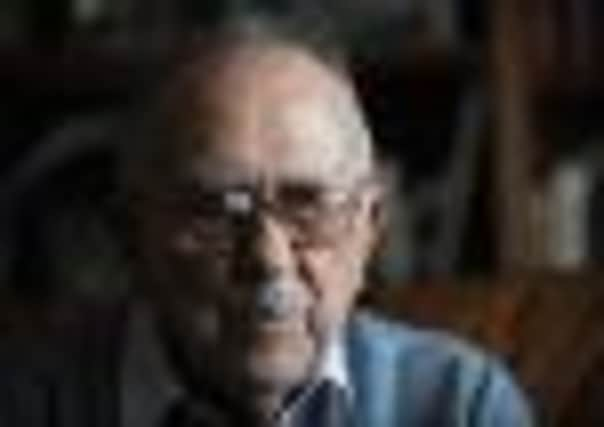Gerald Warner: The whole myth of the Spanish Civil War is sustained by lies


That symbiotic linking of “communist” and “democracy” demonstrated the corporation’s sophisticated appreciation of ideological nuances; it is an axiom that, when a country is struggling to establish democracy, its first recourse is to the general secretary of the Communist Party.
The BBC’s tribute to Carrillo was virtually what would have been broadcast 30 years ago by Moscow Radio. As the obituaries proliferated, one could only wonder why we made such a fuss of Albert Schweitzer and Mother Teresa when we had Santiago Carrillo. This was a man beside whom the Cheeryble brothers were curmudgeons. The corporation, apparently inhibited by some vestige of bourgeois objectivity, did make embarrassed reference to one little local difficulty affecting Carrillo’s reputation, in November 1936, when “he was involved in an incident in which thousands of Franco supporters were marched out of Madrid to be interned [sic] at Paracuellos, to prevent them joining the army. The supporters were instead killed.”
Advertisement
Hide AdAdvertisement
Hide AdSurely no one will blame Santiago for that. He was only the director of public order on the defence junta of Madrid; of the 8,000 prisoners shot over November-December, nobody has been able to prove his direct responsibility for more than 2,500 deaths. In fact, these Franco “supporters” ranged from Falangists to anyone who made the mistake of wearing a collar and tie. They were not marched, they were driven in double-decker buses to killing grounds at Paracuellos de Jarama, Aravaca, Ribas-Vaciamadrid, Torrejón de Ardoz and elsewhere. There was no question of their being “interned” at Paracuellos, a small pueblo with no accommodation: they were interred there. Among the victims of these prison “sacas” was Ramiro de Maeztu, author of Defence Of Hispanidad.
In fairness, Santiago Carrillo was ecumenical in his homicidal activity: he killed Communists too. In 1945 he ordered the execution of fellow party member Gabriel León Trilla; another, Joan Comorera, was similarly sentenced in 1949 but escaped assassination and died in prison. Party sources accuse Carrillo of helping Franco’s police to capture Jesús Monzón, who was jailed but pardoned in 1959, and Julián Grimau, leader of the underground Communist Party in Spain, who was executed in 1963. Yet Carrillo’s great passion was, as we know from last week’s tributes, for democracy, which he conferred on Spain virtually single-handedly and with all the authority of a politician whose party scraped 10 per cent of the vote in 1977 and 4 per cent by 1982 when it was wiped out.
In 1978 this torch-bearer for democracy told the New York Times, speaking of the republic he had helped to rule: “There were political police, concentration camps, etc, but those institutions were necessary, and I am not sure they won’t be in other social revolutions.” In 2005 he was awarded an honorary doctorate by the Autonomous University of Madrid; fortunately for the honour of Spanish academe, a portion of the audience maintained chants of “Paracuellos – Carrillo – Murderer!” throughout the proceedings.
The Spanish Civil War is an infallible litmus test for cretinism among commentators. Guernica, where 300 (not the 1,654 claimed by Republicans) were killed, is the great atrocity; Paracuellos, where thousands were murdered, is unconsidered. Franco’s press officers stupidly denied the bombing of Guernica; since this “peaceful market town” was actually a divisional headquarters with three arms factories, two battalions in garrison and 23 more attempting to retreat through it, any commander who had not attacked it deserved to be shot. The Republicans had bombed open towns from the first week of the conflict, when the Nationalist airforce was non-existent. Picasso’s grotesque daub, which went unremarked when first exhibited in Paris, was commissioned by the Republican government and promoted by the NKVD’s Guernica propaganda offensive. Thereafter, the emperor’s new clothes syndrome intimidated the public from criticising it.
The whole myth of the Spanish Civil War is sustained by lies. Robert Capa’s photograph of “the falling soldier” was taken 35 miles from the alleged site and the discovery of the negatives in 2009 showed the same pose, but a different face, in the next two frames. Laurie Lee did not, as he recounted in A Moment Of War, kill a Nationalist soldier at Teruel; because of his epilepsy he never saw action. All this braggardy and bias was grist to the mill of manipulators such as Santiago Carrillo Solares. Now that this much-lauded, twinkling-eyed mass-murderer has gone to his reward it would be edifying to say we shall not look upon his like again; but history teaches us there will be another one along in a minute.